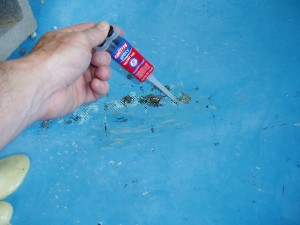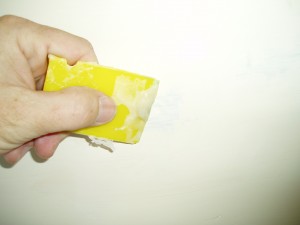The Boston Whaler is constructed from a closed cell foam center sandwiched between two fiberglass shells. In other words, there is an inner fiberglass shell, then closed cell foam and then an outer shell or hull. This makes for a very stiff, unsinkable boat. When the boat leaves the factory these three components are bonded together and are intended to stay that way. However, in certain situations these three components can separate. This is often due to water intrusion but not always. You can find soft spots by simply pressing down on the inner hull and seeing if it gives any. If an area gives a little then the foam and the fiberglass are no longer joined.
To fix this issue you are first going to need to drill holes all around the soft area. I use a short bit so that I do not drill in too far. A bit with a diameter like a q-tip is fine. After you have drilled your holes you can press a q-tip into some of the holes to see if there is a water problem. If the q-tip comes out dry then you can simply squeeze in some epoxy into all the holes an let it set up. This will rebond the hull to the foam. After you have verified that the soft spot is gone you simple sand the holes, fill them smooth with an epoxy and go on to the next spot.
If you test the holes and find that there is water in the hull you have a couple of choices. First, you can cut away the fiberglass from the area, remove the wet foam, then replace the fiberglass piece by bonding it into place and then fiberglassing it in.
If you feel that there is only a small amount of moisture between the layers you can try a second method using gorilla glue or foam sealer described in the next article. Click here.



